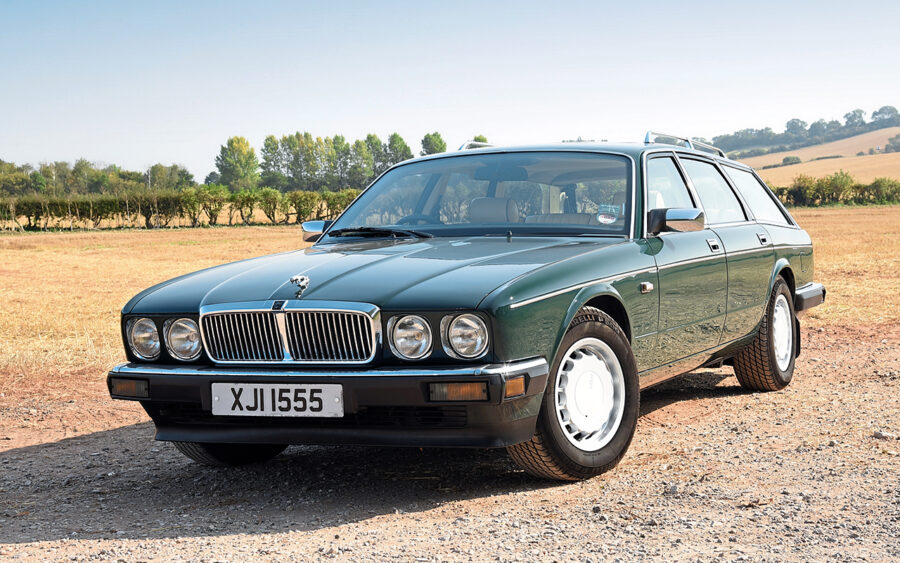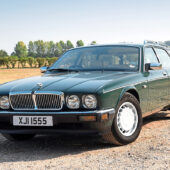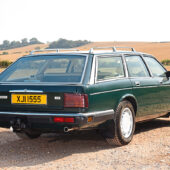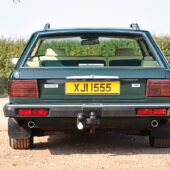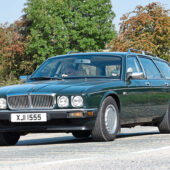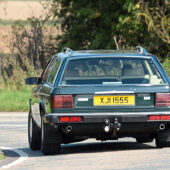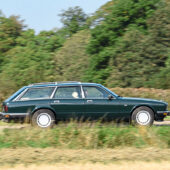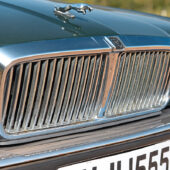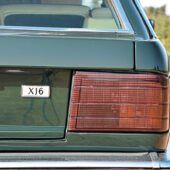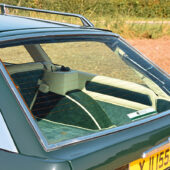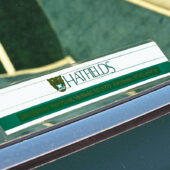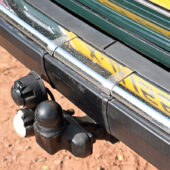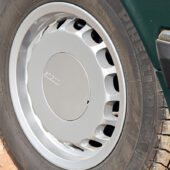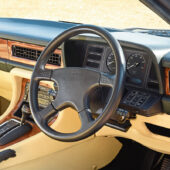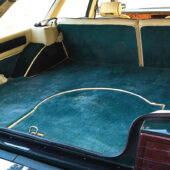When the chairman of a Jaguar dealership wanted to create an XJ40 estate, he turned to experienced coachbuilder Chris Humberstone. We drive a recently recommissioned example
Words and images: Paul Walton
There must have been plenty of options available for John Williams, the chairman of the Hatfields group of dealers, during the late Eighties when he wanted a large, practical yet luxurious car. A Range Rover would have been perfect as would a Mercedes-Benz E-Class or Volvo 760 estate. Even a Ford Transit with leather seats would have been easier than his eventual solution. But, because Hatfields is one of Jaguar’s oldest dealerships, Williams wanted an estate based on an XJ40. There was one – albeit significant – problem: no such car existed. That’s when he decided to have not one but two such cars individually made.
The man Williams approached was no stranger to unusual or unique requests because, for 25 years, Chris Humberstone had been behind some of the most innovative cars designed in this country. He started in the Sixties with a series of Triumph, Mini and Hillman Imp specials, then came the 1973 Sedanca (a striking wedge-shaped coupe based on an XJ6 and commissioned by London dealer HR Owen) that put his name on the map. After that, Humberstone conceived several major modifications for the Range Rover, including a stretched six-wheeler and a handsome convertible version. These caught the attention of Ian Leaf, of Rapport International, a specialist in the famed SUV.
Leaf bought Chris Humberstone Design and employed the man himself. Rapport International then increased the number of modifications for the Range Rover and introduced many other modified cars, including an Austin Metro convertible and a luxury version of the Triumph Acclaim, called the Ritz. But Rapport ran into financial difficulties, a result of offering too many models and taking on an expensive showroom on London’s exclusive Park Lane, and closed its doors for good.
Independent once again, Humberstone later revived the Radford name and became involved in Formula 1, including stints at Beatrice, Benetton, and Brun Technics. He was also the driving force behind the innovative, but ill-fated, Allard J2X Group C racing car. Sadly, this brilliant designer died in late 1998.
Williams’ commission for a pair of XJ40 estates suited Humberstone’s ingenuity and problem-solving skills. He had already designed an estate for Williams based on a 1981 XJ12 Series 3, with the instruction that the car resemble a proper, factory-built estate, unlike the ungainly Avon-Stevens version. This he achieved by lowering the door tops to match the new, sleek roof line and giving the car a shallow rear door. The Hatfields’ chairman used the car for four years after its initial conversion in 1984.
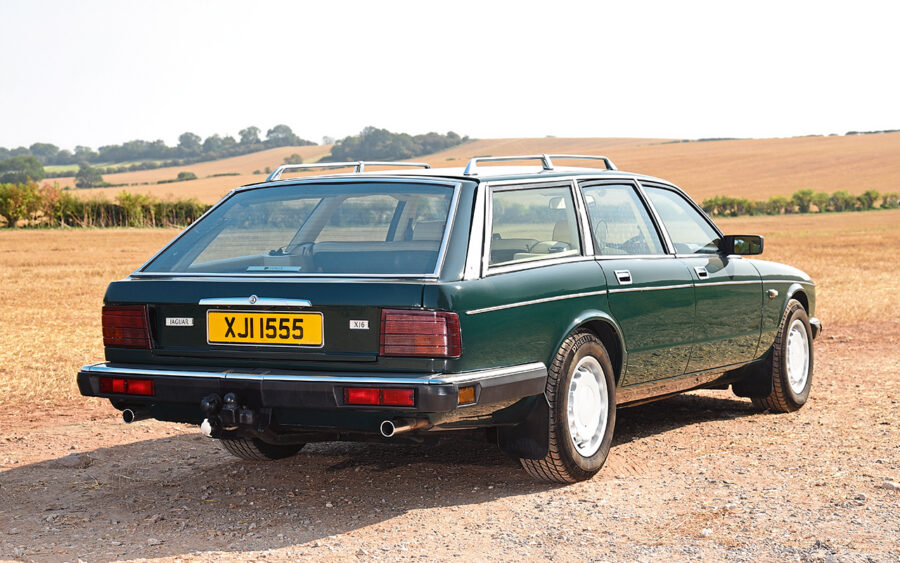
When he came to replace the XJ12, Williams wanted not one but two estates, this time based on the XJ40. Like everything Humberstone did, the conversion from saloon to estate was thorough, clever and well thought out.
The floorpan up to and including the rear axle was standard, but the boot floor was modified to accommodate a new fuel tank underneath, moved from its original position behind the rear seats. From the rear wings backwards, the car was split longitudinally and widened by approximately five inches (he inserted a box section across the car’s width for extra strength). The hatchback door was constructed from glass-fibre and finished with a rear window from an unknown, but suitably large, car.
Two new, entry-level XJ40s – one in blue, the other in green – from Hatfields’ stock were used for the transformation. Who actually turned the saloons into estates is unknown, but it was probably Andrew McKenzie from Connaught Design, of Hayes, Middlesex. He first met Humberstone during the Sedanca project and had built the earlier XJ12 Series 3 estate.
Williams drove the blue car, his wife the green, which were registered as estates on 1 January 1989. As a keen equestrian, Mrs Williams had a tow bar fitted for a horse trailer. Both are known to have liked their estates; as John Williams wrote in a 2001 letter to the third owner, Catherine Marsden, “In the time my wife used the car, it provided her with every satisfaction and, so far as I can tell, was extremely reliable.”
The blue car was sold in 1992 and later became part of a private collection of bespoke shooting brakes in Holland that included the unique Mk 2 County estate. It’s believed this car now resides in France.
Mrs Williams owned the green estate until 1994, when it was sold through Hatfields to a Barry Tinsley. He kept the XJ40 estate until July 1998, when it was bought at auction by Catherine Marsden.
Catherine always had the car serviced and maintained by experienced Jaguar specialist David Marks Garage, in Nottingham. She didn’t enjoy a great start to her ownership, though, since almost immediately the head gasket needed replacing and the sills had to be welded for the MoT test.
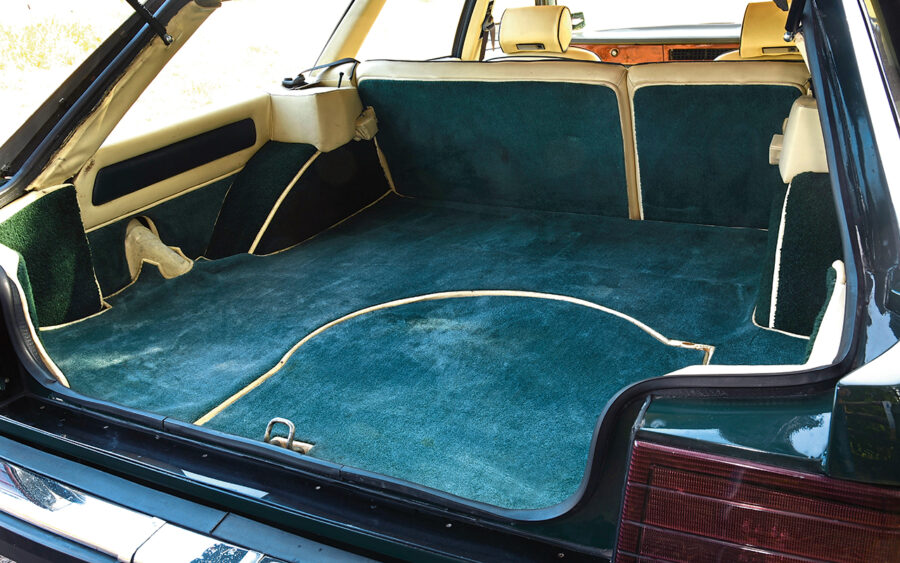
By 2001, the car was in a very poor state, suffering from the usual XJ40 ailments, which included rusty inner and outer wings, plus rotten sills. Despite the car being worth next to nothing, Catherine had it restored by marque expert Alan Proctor, in Worksop. Says David Marks, “There’s no doubt that Catherine Marsden saved the car at a time when XJ40s had no value. She put a lot of time, effort and money into preserving it.”
David Marks Garage continued to service and maintain the car (even fitting factory air conditioning in 2003) until 2005, when it disappeared. “I often wondered what had become of it,” David tells me. And then, in early 2020, he received a call from the Jaguar Enthusiast Club’s magazine editor, Nigel Thorley, who said a friend of his had bought a cache of classic Jaguars from a barn in Cheshire.
“In a corner were several other cars including a Rover SD1, a Thirties Austin and an XJ40 estate,” continues David. “Nigel knew Catherine, knew where she lived and put two and two together. He called me to say he could put me in touch with the owner if I was interested.”
He was. David is both an enthusiast of the saloon and of unusual cars (he owns what’s thought to be the sole surviving XJ40 from the model’s 1986 press launch) and he couldn’t turn it down. He explains, “I admire the vast majority of cars that come through the garage, but I’ve only coveted a few. The estate was one of them.” Catherine passed away in 2007 and the estate past into the ownership of her partner, Dr Alexander Sharpe. When he recently died, their children decided to sell the pair’s eclectic collection of classics.
David travelled north to see the car in January 2020, when it was obvious by its disheveled state and 12-year-old tax disc that the estate hadn’t moved for several years. But, beneath the dirt, faded paint and pitted chrome was a solid car, thanks to Catherine having it restored two decades earlier. “There was no rot at all,” confirms David.
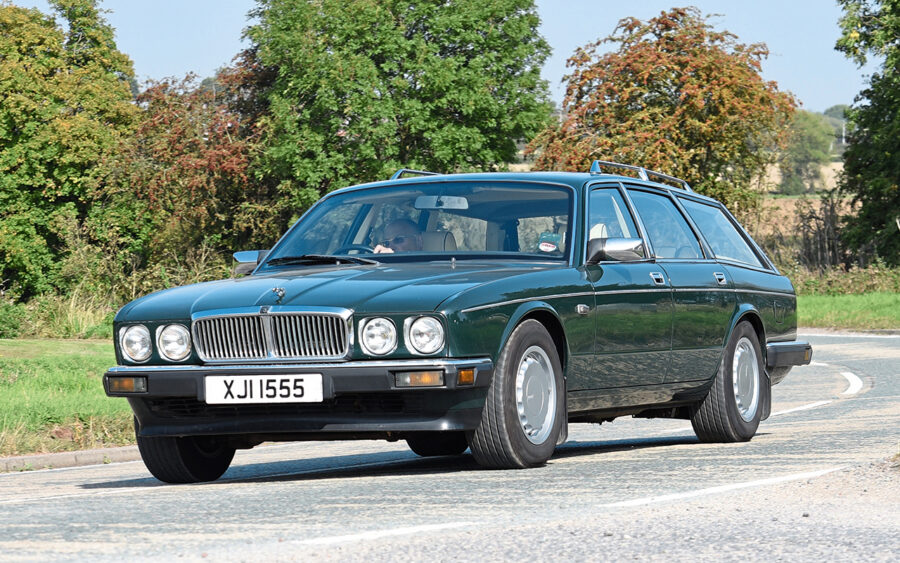
David also thinks he knows why it hadn’t moved for such a long time. “All the cars in the barn were in various states of repair – I think Dr Sharpe was a starter but not a finisher.”
Because David had serviced the estate just 2,000 miles before it was laid up, everything came apart easily when he started the recommissioning process in his workshop. After replacing the old fuel, changing the oil and filter, plus checking the other levels, the 3.6-litre burst into life when he turned the key. “It took us just 90 minutes to get it running.”
Cosmetically, the worst area of the body was a large rusty scab in front of the sunroof, which needed stripping, filling and painting. The screen surround also needed some filler and the glass-fibre rear hatch had to be trimmed where it was rubbing against the rear wings, and then painted.
The 16in Speedline alloys from an XJR that the car came in on were also badly pitted. Williams had said in his letter to Catherine Marsden that the car was standard when his wife owned it, so it was probably Barry Tinsley who swapped the original steel wheels for the Speedlines. David reckons they suit the car’s sleek, racy lines, so sourced a brand new, unboxed set.
Because the suspension bushes needed replacing, David also fitted a new A-frame and swapped all four shock absorbers for the same specification of Bilsteins as an XJR. He also added XJR spacers to the rack to rectify the vague steering, and changed all four brake discs and pads.

Thankfully, the interior – including the bespoke carpets in the boot – was complete, only requiring a thorough valet to bring it up to standard. David did swap the white, four-spoke TWR steering wheel (again probably put on by Tinsley) for a less gaudy black version.
Although not 100 percent finished (the pitted chrome around the windows will need replacing at some point), David intends to use the XJ40 estate regularly. He has already used it for a holiday in Scotland, the car’s refinement and practicality making it the ideal choice for such a long trip. “It’s a viable, drivable, enjoyable and usable machine.”
When I head to David’s Nottingham workshop to see the car, it’s immediately clear that it’s also very pretty. The gentle fall of the extended roof and soft angle of the tailgate make the car more of an elegant shooting brake and less of a hearse-like estate. As was de rigueur in the 80s, the car’s looks (and practicality) are further improved by a pair of chrome roof rails that are thought to have come from a Mercedes-Benz.
Similar in design to Humberstone’s earlier XJ12, the XJ40 is a better match for the angular lines of the new estate section than the curvier Series 3. It is beautifully finished, too. The uniformity of the panel gaps and perfect detailing make it difficult to believe the car was built by an independent coachbuilder and not Browns Lane. Well, perfect apart from the rear bumper. Instead of a new section welded seamlessly into place, a separate chrome panel simply bridges the two halves.
The dashboard is standard XJ40, although the better grade of Connolly leather covering the seats and door tops makes it more luxurious. Lifting the rear hatch reveals a large, wide and carpet-lined boot, plus 30:70 split rear seats. The shallowness of the tailgate makes it more of a grand tourer than a sofa mover, but the extra five inches that Humberstone inserted into the rear makes the space between the rear lights wider than many modern hatchbacks.
Behind the wheel, the car feels like a standard – albeit well-sorted – XJ40, the 3.6-litre straight-six offering the same crisp, yet smooth, acceleration as a saloon. David reckons you can feel the extra weight of the estate section through the corners, but, thanks to the Bilstein dampers, Speedline alloys and steering rack spacers, the handling is surprisingly sharp. There’s very little body roll, yet the ride retains all the suppleness for which the XJ40 is famous.
There were obviously many easier solutions available to John Williams in his quest for a practical luxury car than a bespoke XJ40 estate, although, thanks to the car’s good looks, practicality and drivability, it was clearly the best one.

